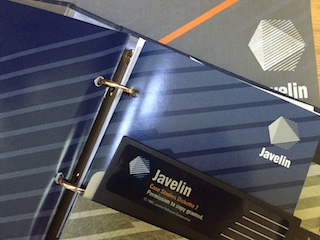Spreadsheet wars, camaraderie, and the pink slime incident
 It’s not about what you’re building. It’s about who you’re building it with, and how it feels.
It’s not about what you’re building. It’s about who you’re building it with, and how it feels.
It’s the hot summer of 1985 in Cambridge, Massachusetts. I’ve left Software Arts, the company that created VisiCalc, the first spreadsheet. After Software Arts lost focus, a new competitor called Lotus 1-2-3 came along and crushed it.
I’m still in my early 20s and working in my second job, as documentation manager for a startup, Javelin Software. Javelin takes a completely different approach to the problems that spreadsheets solve, using named variables instead of a grid. It appeals to my mathematical side.
Javelin is a close-knit team of about a dozen top-notch people. The head of engineering is the smart and personable Chris Herot, a veteran of MIT’s groundbreaking Architecture Machine Group, which would evolve into the Media Lab. The engineers include Peter “Blue” Pathe, who would go on to be the chief architect of Microsoft Word, and John R. Levine, who did pretty well a bit later on with a book called The Internet for Dummies. But to me, they’re just a close-knit bunch of guys who treat me as a member of the development team. I’m grateful to be one of them. We work in offices arrayed around a central “pit” where we hold informal meetings.
We also work together in way I’ve never seen in my short time as a working person. Everyone has a PC, and we’re networked together in this new configuration called a “LAN.” We communicate by email. There’s a central room with a control console, a printer, and, on the floor, a huge hard drive that’s too heavy to lift, about the size of a steamer trunk. I think it holds about 50 MB of data.
It’s pretty hard to bust into the PC software business in the 80s, because it’s dominated by a network of computer stores. You have to create press to build demand. That means the first release has to be great (none of this “public beta” stuff). We work pretty long hours. It’s our goal, above all else, to show that spreadsheets like Lotus 1-2-3 are an outdated way to do things and replace them with a more beautiful, more disciplined model.
It’s the Fourth of July, we’ve been working all day, and we need a break. We want to see fireworks. So we leave our air conditioned office in Cambridge’s Kendall Square and tromp down about three-quarters of a mile to Lotus’ headquarters. Lotus is what we want to be: a massively successful startup. Lotus’ building is directly on the Charles River, with a nice view of the barge that they use to launch the fireworks.
I don’t remember how we got into the building, but I do remember the elevator ride. We’re going up to a top floor and sharing the elevator with a guy in a Hawaiian shirt. It’s Mitch Kapor, the CEO of Lotus. We’re feeling a combination of fear, defiance, and jealousy. He, of course, has no clue who we are.
Anyway, we go out onto a balcony with Kapor and dozens of other people and watch the fireworks go off. The view is breathtaking and we feel like superheroes.
Around 10 o’clock we head back down and sprint back to our offices. It’s stinking hot but we’re running and hooting. It’s a great day to be planning our smackdown on Lotus!
When we arrive back at our office, something is not at all right.
The temperature in the office is in the 90s, just like outside. And as we make our way back to engineering, we see the problem. The engineering pit is now a puddle of goo, the bright pink color of bubble gum, but with the slimy consistency of hair conditioner. The rooftop air conditioning unit has failed and the goo is some sort of coolant that has leaked into our space. It covers the carpet in the pit to a depth of about an inch and has oozed into all parts of the floor of our space.
Everyone rushes into the server room. The goo has reached the server. The hard drive, which isn’t hardened against slime, has failed.
We are all desolate. We swap conspiracy theories about how Mitch Kapor must have sabotaged us.
We call the CEO and ask him to call the building folks. Then somebody finds brooms in a janitor’s closet and we begin to push the goo into containers and dump it out into a big plastic trash can. As I push the broom, my sneakers and socks soak up the glop and turn pink. We’re cleaning up until well past midnight.
I have no idea how they do it, but within a couple of days, with a tape backup and some other jury-rigged stuff, the engineers get things back up and working.
Later that year we ship. Javelin Software takes the press by storm and gets Infoworld‘s Product of the Year. It’s on track for an IPO a couple of years later when the market crashes and takes our dreams along with it.
I move on. Javelin doesn’t displace Lotus 1-2-3; Microsoft Office does. Thirty years later, we’re all still using spreadsheets. But I still remember what it felt like to be one of those guys screaming down the street in Cambridge, mopping up the slime, and tilting at windmills.
Photo: Josh Bernoff